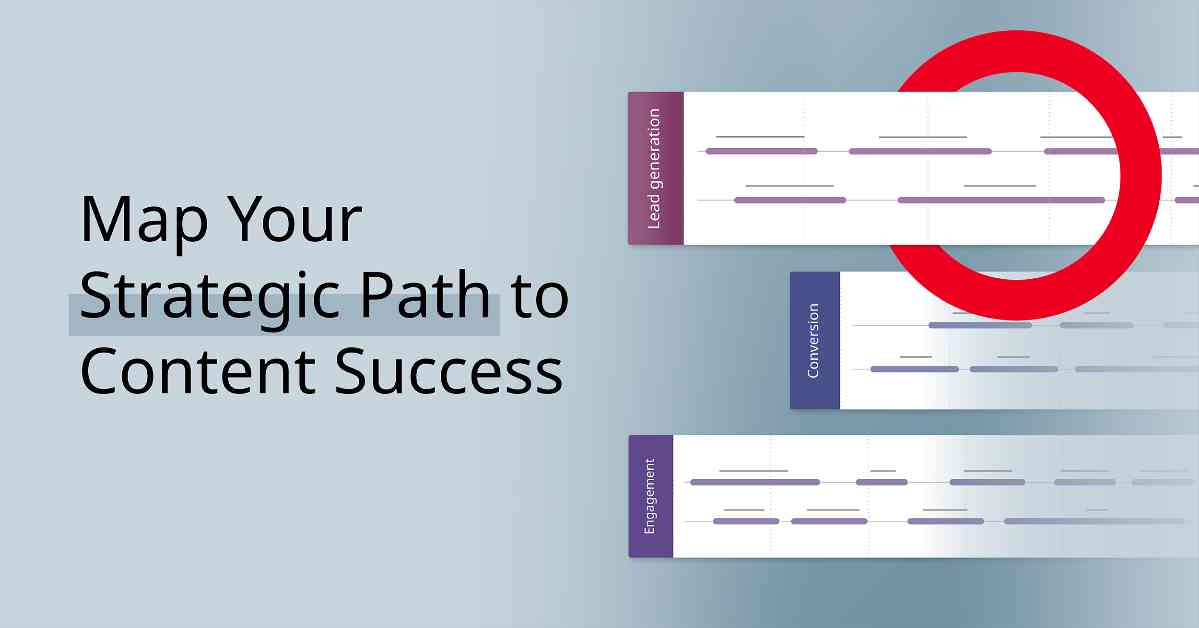Creating a Roadmap for Content Strategy Success
In the fast-paced world of digital marketing, having a clear roadmap for your content strategy is essential for achieving success. Much like plotting a course on a GPS before embarking on a journey, a content strategy roadmap can guide you through the complex decision-making process of content creation and distribution, helping you reach your marketing goals efficiently and effectively.
What is a content strategy roadmap, and why is it important?
A content strategy roadmap is a high-level plan that outlines the steps needed to achieve your marketing objectives. It provides a comprehensive view of content development and distribution at each stage of the marketing funnel, including awareness, consideration, and decision. Unlike a content calendar, which focuses on specific action steps and timelines for individual pieces of content, a content strategy roadmap offers a macro view of your content marketing plan, helping you stay on track as you work towards success.
Essential components to include in your content roadmap
When building your content roadmap, it’s crucial to include key components that provide a clear overview without getting bogged down in specific action steps. Some essential elements to consider incorporating are:
Target Audience:
Clearly define who your target audience is and tailor your content to meet their needs and interests.
Objectives:
Outline what you want your audience to do after engaging with your content, whether it’s generating leads, converting prospects into customers, or improving audience retention.
Content Plan:
Identify the types of content you will create and how you plan to distribute them, such as blog posts, white papers, or social media updates.
Project Milestones:
Set key moments to track, including kickoff, first draft, final draft, and publishing dates, to ensure timely completion of your content initiatives.
Stakeholders:
Clearly define the team members responsible for each initiative and any departmental partners who need to be involved in the process.
Building your content roadmap
The first step in developing your content roadmap is to identify your priority goals. Whether you aim to grow your customer base, generate leads, convert prospects, or engage your audience, your objectives will serve as the destinations your content roadmap leads to.
Evaluate your existing content to determine your starting point. Identify evergreen assets that can be reused, content that needs updating, and stories that no longer align with your goals. This process will help you set the foundation for your content map and identify any gaps that need to be filled along the way.
To fill these gaps, you may need to conduct keyword research, collaborate with your sales team, or analyze customer data to understand what resonates with your audience. By identifying the milestones you need to reach as you progress along your content journey, you can stay on course towards achieving your strategic goals.
Key features of effective content roadmaps
While the structure and design of content roadmaps may vary depending on your business, effective roadmaps typically share common features:
Visual Clarity:
Ensure your roadmap is easily interpreted at a glance, whether it takes the form of a flowchart, timeline, or map.
Well-Organized Structure:
Maintain a consistent structure to facilitate collaboration among team members contributing to the roadmap’s development.
Accessibility:
Make sure the entire path and all steps involved are easy for others to understand, including executive stakeholders.
Fluidity:
Keep your roadmap flexible and easy to update or revise as your strategy, goals, or customer insights evolve.
When creating your content roadmap, consider using a robust content management system to streamline the process and optimize your content strategy effectively.
Developing an Effective Content Calendar
As industries evolve and marketing teams must adapt quickly, a content calendar becomes a crucial tool for staying organized while moving at a rapid pace. A content calendar outlines your publishing schedule across various channels, helping you track the content you’re publishing, where, and when.
What is a content calendar, and why is it important?
A content calendar is a tool that details your publishing schedule for different channels, such as blog posts, social media updates, and press releases. It helps you stay organized and ensures a consistent stream of quality content for your audience, aligning with your strategic content roadmap.
Three steps to creating a content calendar
To create an effective content calendar, follow these three steps:
Define Outcomes:
Ensure all business goals and stakeholder priorities are considered, aligning the content you plan to produce with your strategic content roadmap.
Set a Schedule:
Establish a realistic content creation cadence based on available team resources, utilizing a content management system to streamline the publishing process.
Create and Populate:
Fill your calendar with key information like topics, channels, due dates, and links to drafts, noting any important events or themes that will resonate with your audience.
Continuously assess your calendar’s performance and make adjustments to optimize your strategy based on new insights that arise.
About Brightspot
Brightspot is a comprehensive content management system that enables businesses to deliver exceptional digital experiences with a flexible, fast, and secure platform. With a robust set of tools and templates customizable to your specific business needs, Brightspot empowers content contributors and developers to create dynamic front-end experiences tailored to your audience. To learn more about how Brightspot can support your digital strategy, visit our website or chat with an expert today.









